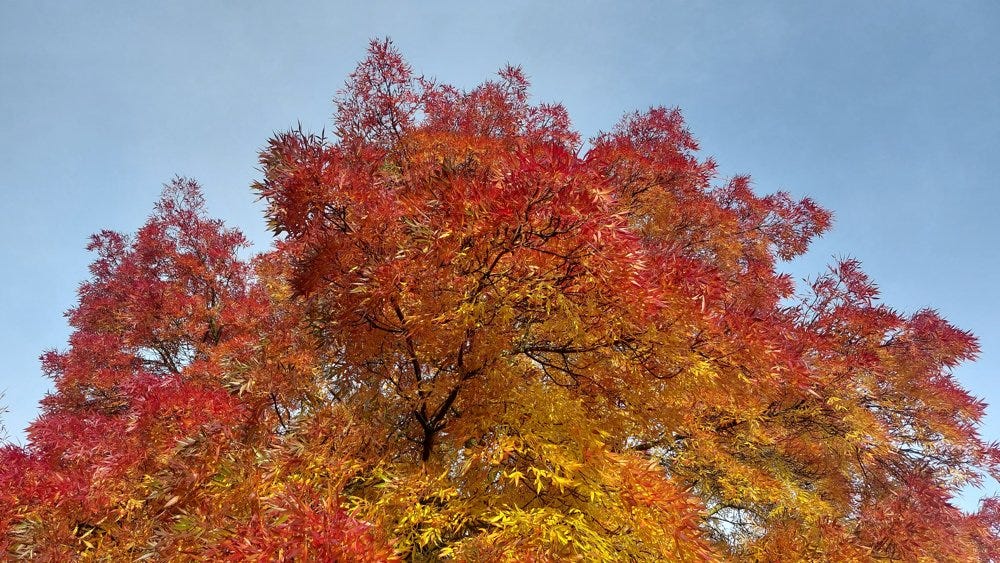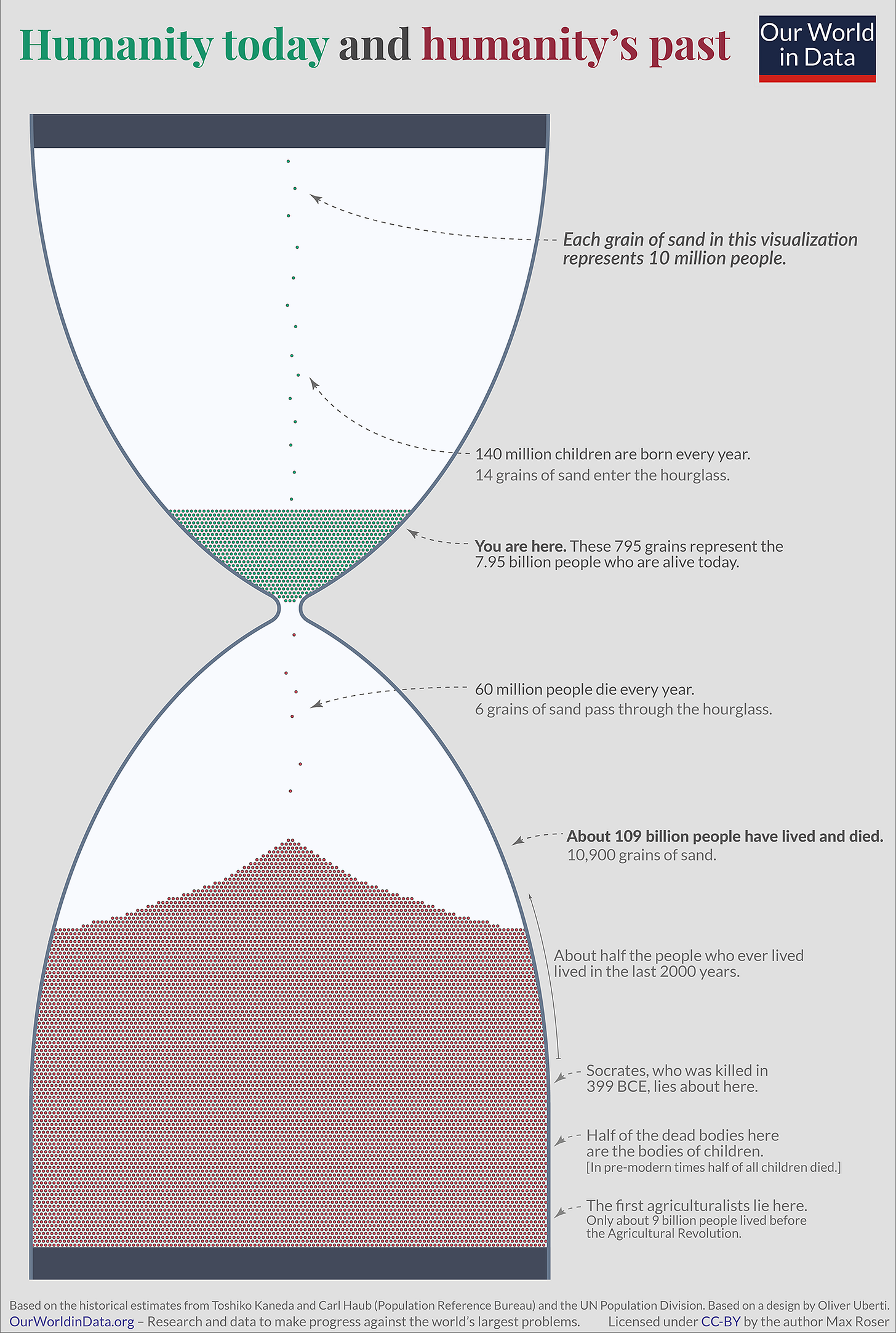A Time Of Unmasking
Are You More Machiavelli, Narcissist or Psychopath?
Happy Autumn!
And a warm welcome from the micro-season of Wind Swirls Through Fallen Leaves.
For those of you new around these parts, welcome 👋 My name is David and I’m a writer, outdoor instructor, cyclist-at-large with Thighs of Steel and Expeditions Manager at British Exploring Society.
Wondering what British Exploring Society do? Watch this video.
Footage was shot by Young Explorers on location in Georgia, Iceland and the Highlands and Islands of Scotland. The voice over narration is made up of (unscripted) voice notes left by Young Explorers after they got home.
In this newsletter, I write stories that help you and me understand the world (and ourselves) a little better.
Sometimes I enjoy autumn.
A Time Of Unmasking

Autumn is a time of dying. Or so it seems. Halloween and all that.
A vivacious tree, losing verdancy with the breakdown of chlorophyll, preparing for the suspension of life, hibernation, winter.
But the reds, oranges and yellows of autumn are not dying colours; they’re not the last sparks of a fire that burns green; these carotenoids are the true colours, heart colours, which lie beneath the summer camouflage of chlorophyll.
In autumn, the Golden Ash removes its mask and returns to the blazing yellow of its youngest shoots, its youth.
Similarly, the inexorable change of season might help us remove our masks.
In our summer days, we might feel compelled to don masks, make ourselves most productive, converting energy into energy, put down roots, hold tight, compete.
But seasons turn and, as they do, perhaps we realise that we can’t take our worldly masks where we are going, nor our signs and symbols of success.
For those who follow the Golden Ash, this is a time to return to the blazing glory of our youth; return to who we were, in our budding potential.
As Wind Swirls Through Fallen Leaves, think not of tragedy, but of unmasking and rebirth.
Yesterday, I went to Jamyang London Buddhist Centre for an all-day thoughtshop* on death, led by Geshe Tenzin Namdak.
During the course of the day, I learned three meditations on death. Each meditation had three phases, only varying in the third:
Sit with your spine straight, your head slightly lowered and with your eyes closed softly. Pay attention to your breath for a minute or so.
Practice concentration by counting breaths. Count ‘one’ on your first in-breath, ‘two’ on your first out-breath, ‘three’ on your second in-breath, ‘four’ on your second out-breath, and so on up to ‘ten’. When you reach ‘ten’, return to ‘one’ and repeat for a few minutes.
Practice analytical meditation for five to ten minutes:
In the first meditation, analyse the proposition that your death is certain and inevitable. Death is a condition of birth. The purpose of this first meditation is to accept that you shall die, and to give you motivation to use this life well.
In the second meditation, analyse the proposition that your time of death is uncertain. The purpose of this second meditation is to accept that you (and any being) may die at any moment, and to give you the strength to start now.
In the third meditation, analyse the proposition that no possessions, no prestige and no persons have any relevance to you at the moment of death. The only thing that is truly beneficial at the time of death is your state of mind. The purpose of this third meditation is to loosen your bonds of attachment to corporeal things, and to inspire you to cultivate your state of mind.
Death is coming. At any moment.
Unmask.
__
*I guess ‘thoughtshop’ is the thinking counterpart to ‘workshop’.
Three Tiny Big Things
1. 40th Percentile Narcissist 👋
I cordially invite you to take the Short Dark Triad (SD-3), which measures the three ‘socially aversive’ traits of machiavellianism, narcissism, and psychopathy.
Machiavellianism is the personality trait of being unprincipled and manipulative, cynical and an acceptance of ‘by whatever means necessary’.
Narcissism is the personality trait of vanity, self-superiority, entitlement, dominance, and a craving admiration and submission.
Psychopathy is the personality trait of being low-empathy and high impulsivity. It is a persistent pattern of deviant behavior and a disregard for others.
As doubtful as I am about the test’s validity in a self-administered online quiz format, I’m totally onboard with the results — I am definitely more narcissist than Machiavellian or psychopath!
2. 7% of All Humans Ever Are Still Alive Today 🙋♂️
3. Go Wild Leadership for Young People! 🐻
If you want to go really deep on what happens on a British Exploring Society expedition, then here is a video made by one of the Young Explorers on the Pinnacle Wild Leadership programme in Svaneti, Georgia.
Thank You
Huge thanks to all the paying subscribers who helped make this story possible. You know who you are. Thank you. 💚
If you enjoyed this one, then go ahead and tell me. It’s the only way I’ll know. You can tap the heart button, write a comment, share the newsletter with friends, or simply reply to this email.
If you’re not into the whole Substack subscription thing, then you can also make a one-off, choose-your-own-contribution via PayPal. That’d make my day.
As always, thank you for your eyeballs and thanks for your support.
Big love,
dc:





Those death meditations are wonderful, going to give them a try. They remind me of this little song by my friend Tim the Clamjamfrie, which for a while I tried to sing every morning when I got up (and am now inspired to sing today): https://www.youtube.com/watch?v=dyVwIf7yiA4